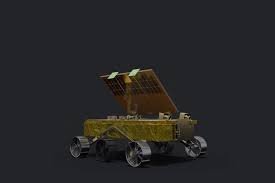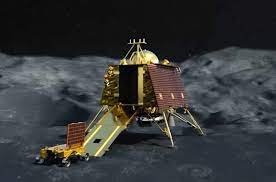Chandrayaan-3| mission|launch|journey of chandrayaan3

Chandrayaan-3
Chandrayaan 3 mission ,In the vast expanse of the cosmos, humanity’s quest for knowledge and exploration has led to remarkable achievements. One such remarkable endeavor is India’s Chandrayaan-3 mission, which encapsulates the spirit of curiosity, innovation, and scientific discovery. Translating to “Mooncraft” in Devanagari script, Chandrayaan-3 is the latest jewel in the crown of the Indian Space Research Organisation (ISRO), representing India’s ambitious pursuit of lunar exploration.
chandrayaan 3 mission(Crafted Components: A Symphony of Engineering Excellence)
At the heart of Chandrayaan-3’s mission architecture lie two critical components, each meticulously designed to fulfill its unique role:
Vikram Lander: Named in honor of the visionary Dr. Vikram Sarabhai, the Vikram lander is a marvel of precision engineering. Its primary objective is to achieve a gentle lunar landing, a task that proved challenging during the Chandrayaan-2 mission. With four landing legs and four 800 Newton thrusters, the Vikram lander is equipped to make a seamless touchdown on the rugged lunar surface.
Pragyan Rover: The Pragyan rover, named after the Sanskrit word for “wisdom,” embodies ISRO’s relentless pursuit of knowledge. Weighing in at 26 kilograms and featuring a six-wheeled design, this rover is built for mobility and versatility. It is set to traverse up to 500 meters, unveiling the mysteries of unexplored lunar terrains and providing a wealth of data for scientific analysis.
Launch date of chandrayaan 3 (Mission Progress: A Journey Beyond Boundaries)
Chandrayaan-3 embarked on its voyage on July 14, 2023, at 2:35 pm IST, marking a significant milestone in India’s lunar exploration journey. Entering lunar orbit on August 5, 2023, the mission sets its sights on a historic landing near the lunar south pole on August 23, 2023. The strategic timing of the launch, based on the Earth-Moon proximity, underscores ISRO’s meticulous planning and dedication to success.

The Journey Ahead: A New Chapter in Space Exploration
As the countdown to Chandrayaan-3’s launch continues, anticipation mounts, and excitement reverberates within the scientific and space communities. This mission represents a pivotal moment in India’s space odyssey, a culmination of years of scientific expertise, engineering brilliance, and unwavering determination.
Chandrayaan-3 embodies the essence of human curiosity and the unrelenting pursuit of knowledge. In the ever-evolving tapestry of space exploration, this mission stands as a testament to the remarkable achievements that can be realized through international collaboration, technological innovation, and the spirit of exploration that knows no bounds. As Chandrayaan-3’s journey unfolds, humanity eagerly awaits the revelations it promises to unveil about the Moon, our solar system, and the mysteries that lie beyond.
Mission Objectives: Decoding Lunar Mysteries
Chandrayaan-3 embarks on its mission with a multitude of objectives, each contributing to our understanding of the Moon and the broader universe:
- Precision Landing: Building on lessons learned from Chandrayaan-2, Chandrayaan-3 aims for an impeccable lunar landing. This mission seeks to conquer the challenges that hindered the previous attempt, transitioning seamlessly from lunar orbit to the Moon’s surface with unwavering precision.
- Rover’s Expertise: The Pragyan rover is a testament to ISRO’s technological prowess in rover design and operation. Through its mobility, the rover is set to expand our understanding of lunar geology and surface features, showcasing ISRO’s competence in rover technology.
- In-Situ Analysis: One of the core goals of Chandrayaan-3 is to unveil the elemental composition of the Moon’s surface. By conducting comprehensive experiments with lunar materials, the mission aspires to unlock the fundamental building blocks that shape the Moon’s geology and history.
Innovative Architecture: Building the Future of Lunar Exploration
Chandrayaan-3’s mission architecture is a triumph of innovation and engineering, consisting of three distinct modules that work in tandem:
- Propulsion Module: Serving as both a conduit and a relay station, the propulsion module plays a crucial role in guiding the lander and rover to a 100-kilometer lunar orbit. With its single substantial solar panel and prominent cylinder, this module aids in mounting the lander for its descent to the lunar surface.
- Lander: Engineered to ensure a gentle lunar touchdown, the lander incorporates several enhancements based on the lessons learned from Chandrayaan-2. Equipped with four throttle-able engines, the lander offers thrust valve slew rate flexibility, enabling precise descent. Its enhanced attitude correction capabilities further contribute to a safe landing.
- Rover: The rover’s six-wheeled design exemplifies versatility and durability. This rover is more than a machine; it’s a scientific tool designed to unravel the chemical composition of lunar terrain, uncover traces of water ice, decipher the Moon’s impact history, and shed light on its atmospheric evolution.
also read aboutIndian Economics at a glance : Quick revision key factor
Scientific Instrumentation: Unveiling Lunar Secrets
Chandrayaan-3 hosts a suite of cutting-edge scientific instruments on both the lander and rover, each meticulously chosen to reveal different aspects of the Moon:
Lander Instruments:
- Chandra’s Surface Thermophysical Experiment (ChaSTE): This instrument is designed to analyze temperature and thermal conductivity, providing insights into the Moon’s surface characteristics.
- Instrument for Lunar Seismic Activity (ILSA): Dedicated to measuring lunar seismicity, ILSA will contribute to our understanding of the Moon’s geophysical activity.
- Langmuir Probe (LP): By assessing plasma density, the Langmuir Probe helps to unravel the Moon’s interaction with its environment.
Rover Instruments:
- Alpha Particle X-Ray Spectrometer (APXS): The APXS instrument deciphers the chemical composition of lunar materials, shedding light on the Moon’s geological history.
- Laser Induced Breakdown Spectroscope (LIBS): LIBS analyzes the elemental composition of soil and rocks, providing crucial information about the Moon’s surface composition.
- Spectro-polarimetry of Habitable Planet Earth (SHAPE): While not directly related to lunar exploration, SHAPE measures Earth’s spectral characteristics, offering a unique perspective on our home planet.








